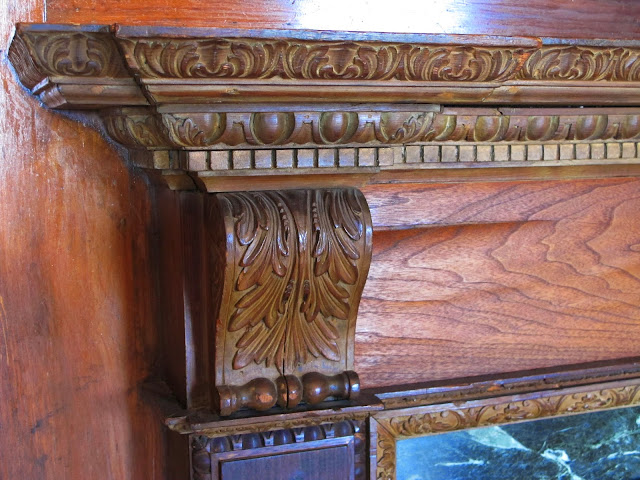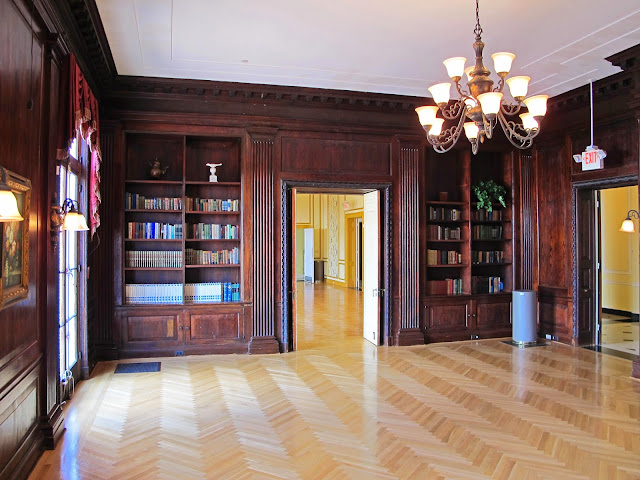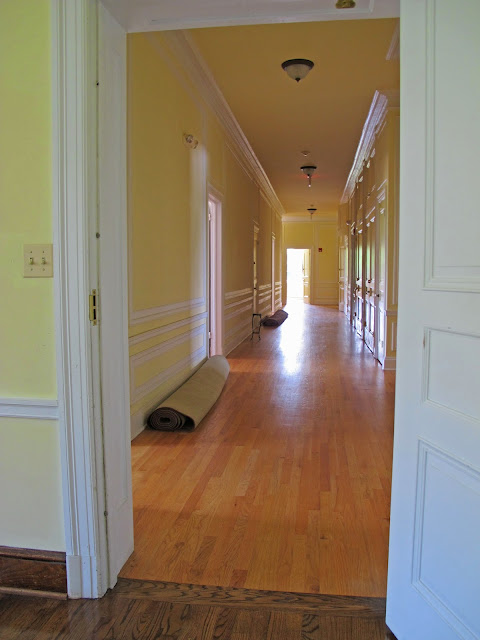It is the charm of the American class system, according to some, that most people don't know it exists. And if they do, they don't know their own place in it. Sumner Welles (1892-1961) knew his real place. Son of one of New York society's "Patriarchs," grandson of "the" Mrs. Astor's sister Katherine, and Edith Wharton's grand-nephew, Welles at age 12 carried Eleanor Roosevelt's train at her wedding to FDR. According to a 1997 biography by his son, he would become one of "the half dozen most influential American career diplomats of this century."
During his years at the State Department, Welles advocated the so-called Good Neighbor Policy, which substituted a degree of sensitivity for the reflex military invasions that formerly greeted any threat to American investment. Smiling at villains like Cuba's Fulgencio Batista came with the territory, but didn't minimize the importance of the policy.
Welles was married three times, his second wife a divorced beauty named Mathilde Townsend. Until her death in 1949, the couple's in-town address was this Washington D.C. mansion, rebuilt by Carrere and Hastings in 1901 for Mrs. Welles' mother. Since 1950, it's been the Cosmos Club.
President Coolidge, a friend of Mrs. Welles' first husband and moralist of a sort familiar in that era, observed Welles in her company before the divorce. "So long as I am president," he supposedly muttered, "that young man will never even be a minister." Coolidge made sure the young man didn't even have a job and Welles soon found himself back in private life. Until FDR's election, Welles wrote tomes on foreign policy from comfortable exile on a 245-acre estate called Oxon Hill Manor. The property was located in Prince George's County, MD., all of 9 miles from the U.S. Capitol Building. Such was the world before urban sprawl.
An early 18th century manor house, also named Oxon Hill and rife with important colonial associations, stood on this site until gutted by fire in 1895. In 1927, Welles and his wife bought the land and hired architect Jules Henri de Sibour (1872-1938) to design this handsome neo-Georgian mansion, completed in 1928. de Sibour, reputedly a direct descendant of Louis XVI (a neat trick, since that unlucky Louis had none), was, per "The Georgetowner," Washington's "charming maestro of Beaux Arts architecture." Some pretty grand stuff on Massachusetts Avenue, notably the Uzbekistan embassy, finished in 1909 for coal magnate Clarence Moore, was de Sibour's work. An alumnus of St Paul's, Yale, Skull and Bones, the Ecole des Beaux Arts, and the New York offices of society architects Ernest Flagg and Bruce Price, he was a natural choice for a client like Welles.
Most people, thinking mistakenly that Beaux Arts is a style and not an approach to form and purpose, wouldn't call this a Beaux Arts house. It is, after all, a long way from the "Cartouche Architecture" for which de Sibour had such a flair. Oxon Hill, stylistically anyway, is a sort of homage to the original brick manor, seen through a 20th century lens of American wealth, convenience and comfort. I have to say, I like it a lot. It's got light, heft, style, big rooms, and big views which, though not quite what they used to be, remain surprisingly sylvan, 9 miles from the Capitol.
A kitchen wing extending to the north, with maids' and footmen's quarters on separate 2nd floor corridors, is remarkably invisible considering its size.
This admittedly unsatisfactory image nonetheless shows Oxon Hill's simple, gracious and calmly efficient first floor plan.
I doubt strongly these are original colors on the walls. Too bright, I'd say. Fortunately the essential aristocracy of design and proportion remains unobscured.
Oxon Hill Manor house and grounds, owned by Prince George's County since the 1970s, is used by all sort of groups and individuals, prime among them people getting married. I suppose it doesn't much matter that most of them have only the vaguest idea of how these interiors would originally have been decorated.
When FDR was elected in 1932, Welles returned to government as the new president's principal foreign policy advisor. Between 1937 and 1943, he was Under Secretary of State, in which position he guided policy not just in Latin America, but on Soviet annexation in the Baltics (we refused to acknowledge), the plight of German Jews (we refused to help), and the future of the United Nations (we were big supporters). On August 11, 1941, Welles was on the cover of Time Magazine. Throughout these same years, he was locked in combat with Secretary of State Cordell Hull (1871-1955), an adversary consumed equally by ill health and personal rancor toward Sumner Welles.
I love this house, but the veneered library paneling is not the quality you'd find in a house built 20 years earlier. As for those light fixtures, all replacements I'm sure...well, the less said the better.
You have to look beyond the dreadful modern decoration to appreciate Oxon Hill's grand and beautifully proportioned dining room. Serving pantry and kitchen, save for new floor tiles, are 1920s antiques in practically original condition.
So what was wrong with the old floor?
A service entrance adjacent to the kitchen court opens onto this hall. The door to the kitchen is on the left; ice was loaded into the walk-in through the high door on the wall; the servants' hall, now an office, is through the doorway on the right.
Let's retrace our steps through the kitchen, pantry and dining room, to the main stair.
How graceful is the stairhall, although after walking though this house it was a while before I could look at an egg yolk. The dining room is through the door on the left; the service hall is straight ahead in the distance; the ladies' and gents' are tucked under the stairs; and the reception room (see floor plan above) is behind the wall on the right.
I've made some assumptions with my second floor labels - the female servants facing the Potomac; the men facing inland; the location of Mr. Welles' study and his wife's boudoir - but I'm probably right.
At the top of the stairs, Guest 1 and its en suite bath are essentially intact. My regular readers will recognize the upscale 1920s Crane bathroom fixtures and hardware.
A patched baseboard molding betrays the modern insertion of a door that blocks the original view south down the 2nd floor hall.
The guestrooms are mostly intact, but their baths have been randomly cannibalized.
In September, 1940, returning to Washington from the funeral of House speaker William Bankhead, Sumner Welles propositioned not one, but two Pullman porters who, if the incident weren't already spicy enough, also happened to be black. The porters complained to the railroad and, although the press of the era avoided private scandals, this provided no protection from Welles' nememis, Cordell Hull. On the night in question Welles was seriously drunk, not for the first time. Nor was he trawling for sex with men for the first time either. Sumner Welles was a sexual libertine whose college addiction to hookers had long ago graduated to men. Despite a vendetta launched by Hull's State Department cronies, notably Ambassador (to the Soviet Union and France) William Bullitt, FDR protected Welles. Quite aside from Welles' sexuality, he was an extremely able negotiator and policy expert. This made no difference to Republican Senator Owen Brewster, however, who, through Hull's efforts, learned of the scandal and threatened Roosevelt with a Senate investigation unless Welles resigned. Being gay back then was a crime, after all, and gay government men, especially in wartime, were considered threats to national security. In September, 1943, FDR angrily relented, accepting a good man's resignation rather than let a life be ruined. The photo below of Mr. & Mrs. Welles looks to have been taken at about this time.
The owners' bedroom is on the southwest corner of the house, between his study and her boudoir - although maybe the study was actually his bedroom. A large sunny terrace enjoys a good view of the Potomac, despite growing trees and the new National Harbor complex located just downstream.
A door on the north wall leads to what I'm guessing was Mr. Welles' study. The fireplace strikes a masculine note, in contrast to all that lemony yellow paint. A bath and shower are en suite.
Mrs. Welles' bath and boudoir are beyond a door on the bedroom's west wall. Her grand old marble bathroom, like others in the house, has suffered serious shopping raids, which the county shouldn't have let happen.
Let's head back along the bedroom hall, bearing in mind that door in the distance wasn't de Sibour's idea, cross the landing at the top of the stairs, and have a look at the servants'quarters.
This view shows the double corridors, for male and female help respectively, connected here but also separately accessible. Oxon Hill had live-in accommodations for 12 in help. I've lived in houses with equally dispirited looking servants' quarters. If the main rooms look fine, one tends to forget falling ceilings in distant unoccupied maids' rooms.
Having successfully chased him out of government, Welles' foes, like the press, went back to ignoring his sexual peccadillos. For the rest of the '40s and into the early 1950s, he was a radio commentator of some note, wrote an important book on Palestine, and championed (belatedly) the cause of Israel. By the time of his 3rd marriage in 1952, both the house in town and Oxon in the (still) country were sold, symbolic of a new start in life. Having largely escaped the viciousness of the McCarthy hearings, Welles fell victim in May of 1956 to a mean-spirited expose in Confidential Magazine. "We Accuse Sumner Welles" screamed the front page."No government at war could commit greater folly than to retain a confirmed homosexual in its No. 2 Foreign Policy post." Rather than quote passages from this article, I will pick from the text a selection of pithy nouns and phrases, to wit: "homosexual" (appears practically in every paragraph), "conspiracy of silence," "security risk," "perversion," "public indignation," "liquored up," "prissiness," "morally ill," "lavender stripe," "obstreperous" and, juiciest of all, "squiring a handsome youth."
Of course I looked at the basement, where I admired the new boilers and wondered what in the world had happened to the original floorboards and plastered walls.
Welles and his last wife Harriet Post had been married only a few years when Confidential's expose was pubished. Five years later he binged himself to death at the age of 68. Despite heavy suburbanization in recent years, Oxon Hill's country acres survive, surprisingly intact, as county parkland, albeit now bisected by a stretch of the Capital Beltway. The link is http://history.pgparks.com/sites_and_museums/Oxon_Hill_Manor.htm.
Sonnet 29, by William Shakespeare:
When, in disgrace with fortune and men's eyes
I all alone beweep my outcast state,
And trouble deaf heaven with my bootless cries,
And look upon myself, and curse my fate,
Wishing me like to one more rich in hope,
Featur'd like him, like him with friends possess'd
Desiring this man's art and that man's scope,
With what I most enjoy contented least;
Yet in these thoughts myself almost despising,
Haply I think on thee, and then my state,
Like to the lark at break of day arising
From sullen earth, sings hymns of praise at heaven's gate;
For thy sweet love remember'd such wealth brings
That then I scorn to change my state with kings.

































































































